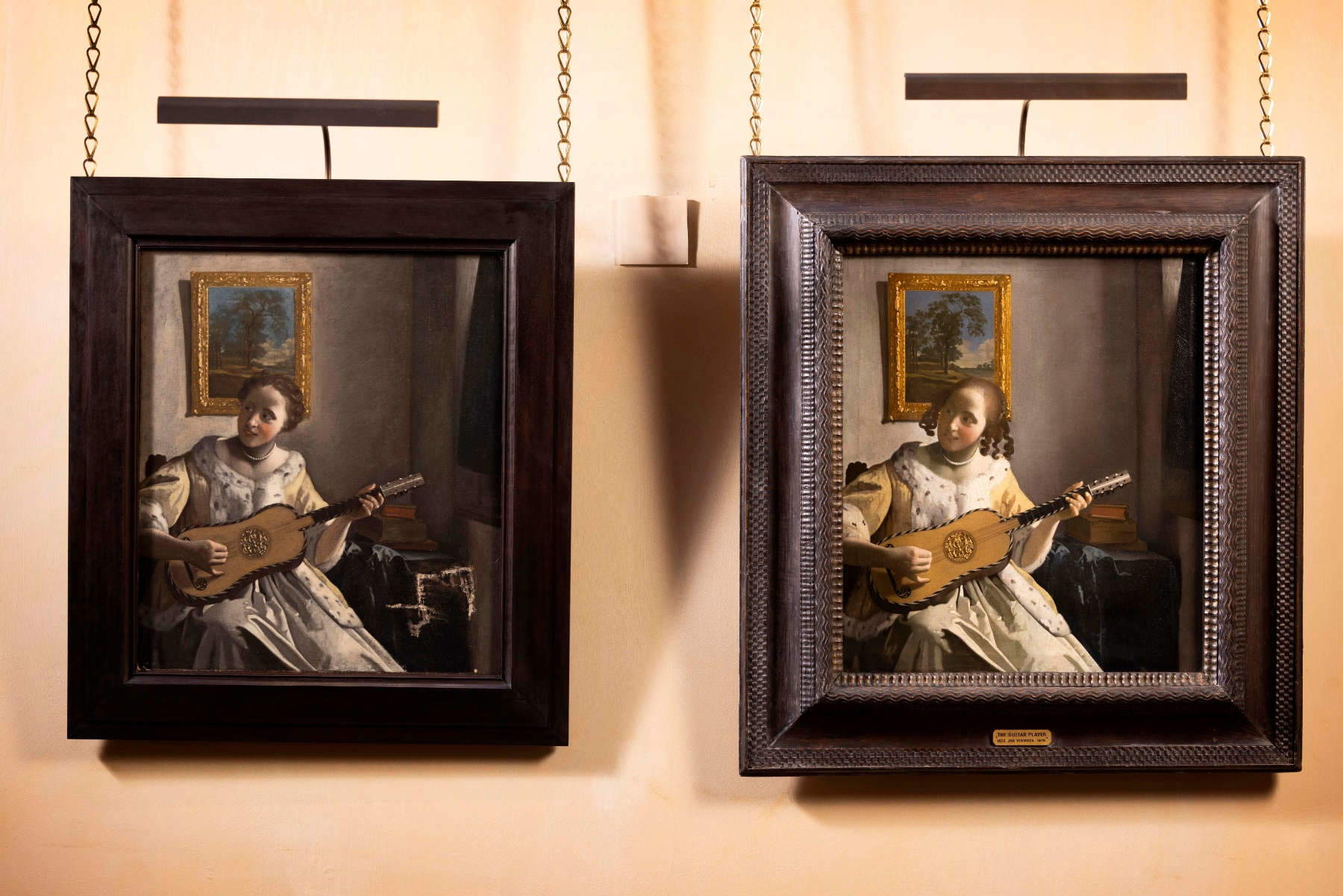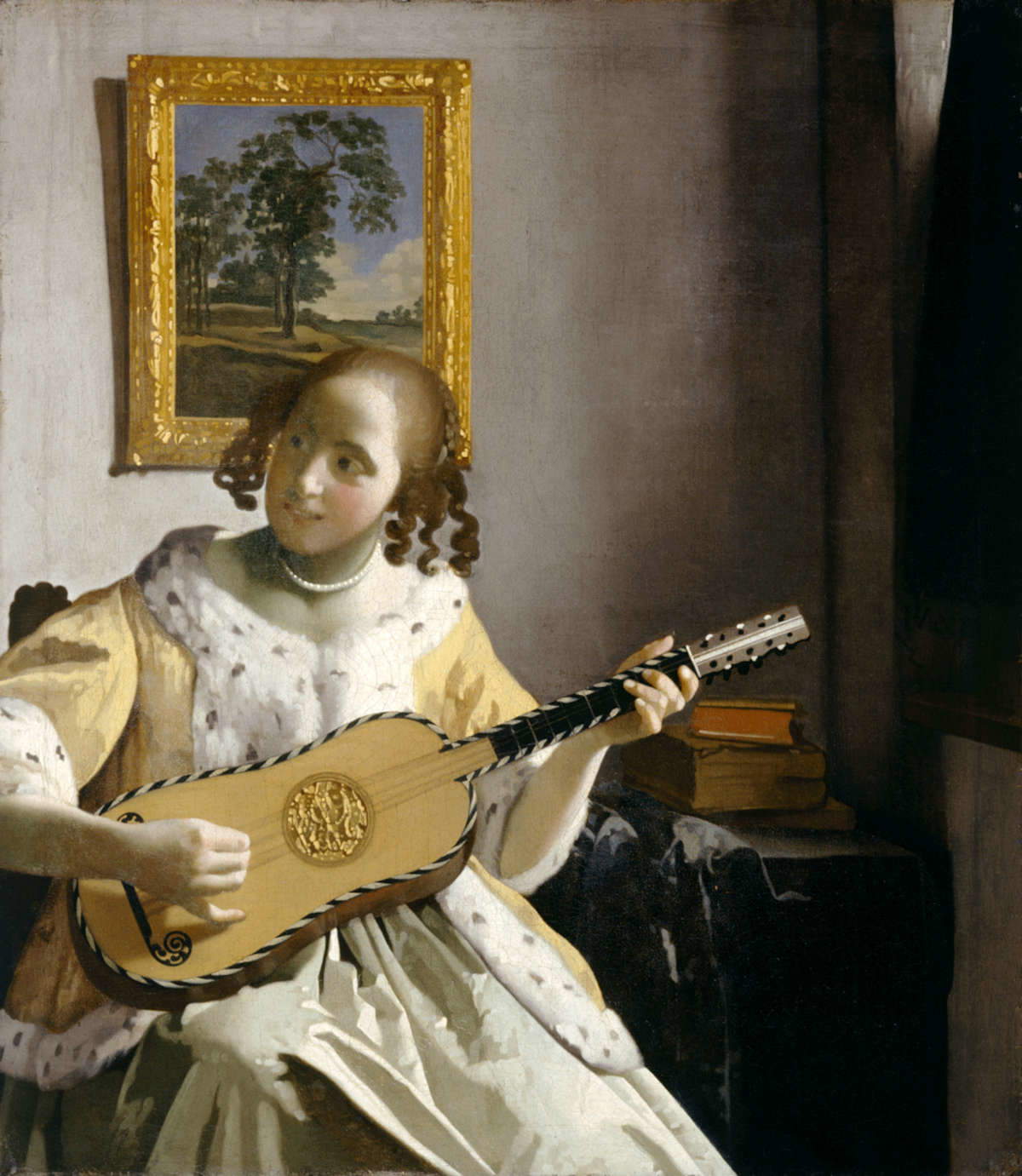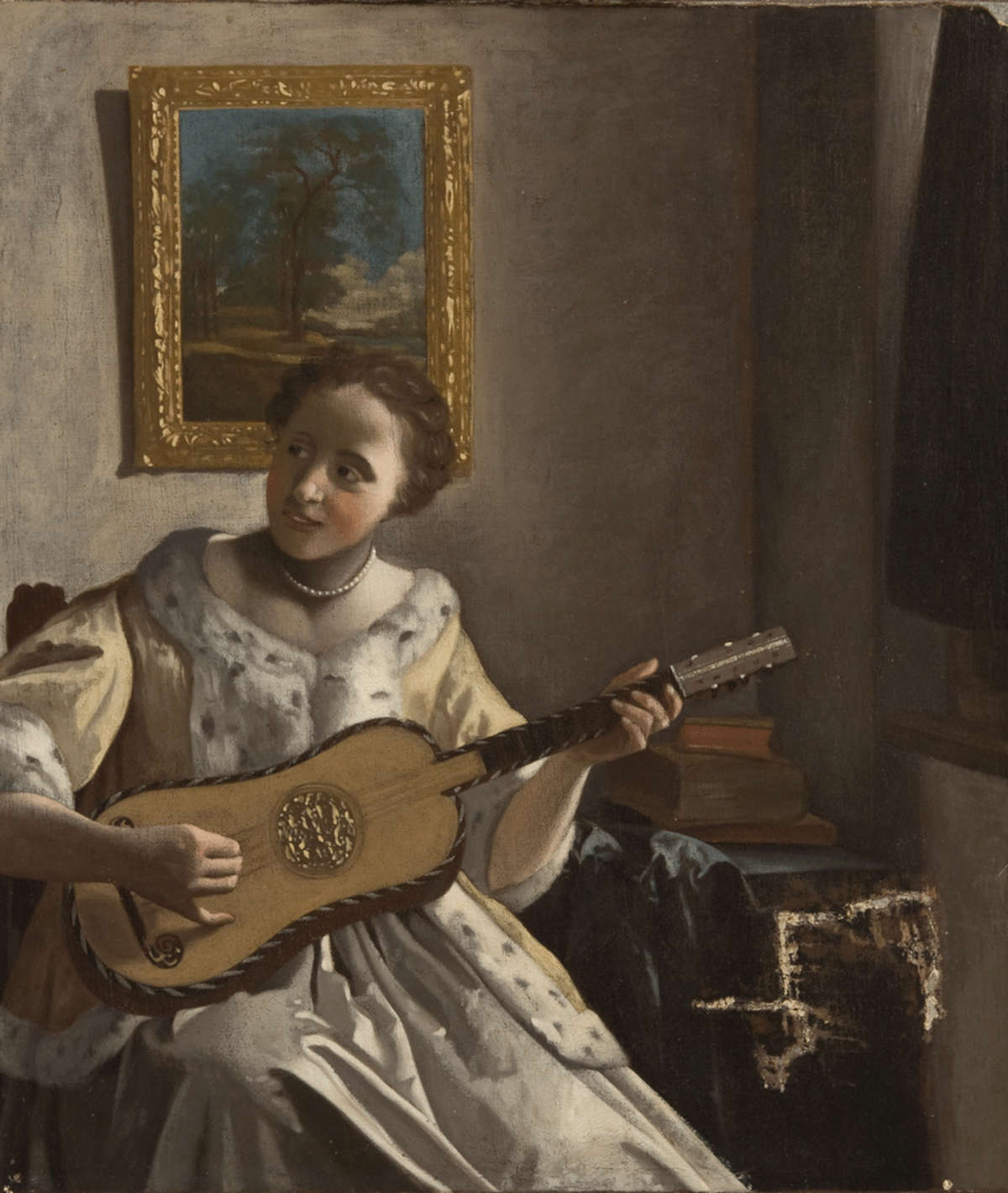For the first time in more than three centuries, two nearly identical canvases that have long been discussed will be found next to each other: they are the celebrated Woman Playing the Guitar by Johannes Vermeer (Delft, 1632 - 1675) and its enigmatic “twin,” preserved at the Philadelphia Museum of Art. The meeting, which marks a unique event in art history, is hosted at Kenwood House, the London mansion where Vermeer’s original has been kept since the 18th century. The occasion coincides with a symbolic occasion-the 350th anniversary of the painter’s death in 1675-and promises to ignite new discussions around the mystery surrounding the second version.
Vermeer’s English canvas, dated 1672, belongs to the tiny corpus of 37 works attributed with certainty to the Delft master, famous for his domestic scenes of everyday life suspended in a timeless light. The work depicts a young woman gazing upward, caressing the strings of her instrument while the vibrations still resonate in the air. The chromatic precision, the use of ultramarine blue and the construction of light make it one of the artist’s best-preserved works.
The American counterpart, however, is shrouded in an aura of uncertainty. Similar in size, it reproduces the same scene but with significant differences: the protagonist’s hair is not gathered in curls as in the London version, and most importantly, the painter’s signature is missing. Long considered an authentic Vermeer, then an imitation, the Philadelphia canvas remains an enigma: who painted it, and why?

The difficulty of directly comparing the two canvases was so far compounded by their state of preservation. Kenwood’s Suonatrice is among the master’s best-preserved works, while the American canvas bears the signs of time, an old tear and damage caused by pre-twentieth-century cleaning. This is precisely why it is exhibited today in its unrestored state, offering the public a rare opportunity to view a painting as it would appear on a restoration table.
From 2023 to 2025, the Philadelphia version was the subject of extensive research involving scientists, restorers and art historians from the Philadelphia Museum of Art along with the National Gallery in Washington, while new studies were also conducted on the London canvas thanks to English Heritage and the National Gallery in London. Early results have already revealed substantial differences in the techniques and materials used.
In the Kenwood House canvas, the canvas preparation consists of a single light gray-brown layer, consistent with Vermeer’s other late works. The extensive use of natural ultramarine-a very expensive pigment made from lapis lazuli-confirms the painter’s hand and color choices. In contrast, the American version has a dark brown background based on burnt shadow earth, lead white, charcoal and clay; for the blue, instead of ultramarine, the anonymous author chose indigo, a far less valuable pigment. The landscape greens also differ: Vermeer employed green earth, while in Philadelphia the shade was obtained by mixing indigo and yellow ochre.


These discrepancies suggest not only a material but also a conceptual distance between the two works. If the London canvas reveals the skilled and costly hand of a seventeenth-century Dutch master, the American one hints at the work of an artist with different means and intentions. Research, still ongoing, has not provided a definitive answer to the painting’s origin, however, and a scholarly article expected in the coming months promises to further clarify the relationship between the two works.
In the meantime, the public can view both canvases side by side until Jan. 11, 2026, in a display that makes palpable the dialogue between the established authenticity and the still unsolved mystery. The exhibition Double Vision: Vermeer at Kenwood thus becomes not only a celebration of Vermeer’s genius, but also an invitation to reflect on the very concept of authenticity in art and the continuing fascination with the enigma of attributed, copied or imitated works.
“It’s a thrilling experience to come face to face with a Vermeer masterpiece, not to mention his near-duplication next door,” says Wendy Monkhouse, senior curator at Kenwood House. “We are extremely grateful to the Philadelphia Museum of Art, which has loaned its version of the Player so that Kenwood visitors can view the two works up close. It is an extraordinary painting, with wonderful details, from the painting within a painting hanging on the wall, to the table laden with books and the folds of a luxurious blue fabric, to the translucent beads around the character’s neck, which catch the light. Since the 1920s, scholars have wondered about the relationship between these two paintings, but this exhibition draws no conclusions, instead inviting visitors to witness the artistry of one of the greatest artists of the 17th century and answer that question for themselves.”
 |
| Vermeer, the two "guitarists" compared after three centuries: what is their relationship? |
Warning: the translation into English of the original Italian article was created using automatic tools. We undertake to review all articles, but we do not guarantee the total absence of inaccuracies in the translation due to the program. You can find the original by clicking on the ITA button. If you find any mistake,please contact us.